[vc_row][vc_column][vc_column_text]
[/vc_column_text][/vc_column][/vc_row][vc_row][vc_column][vc_column_text]
[/vc_column_text][/vc_column][/vc_row][vc_row][vc_column width="2/3"][vc_single_image image="20448" img_size="full"]
[nd_options_spacer nd_options_height="10"]
[nd_options_spacer nd_options_height="10"]
[vc_column_text]August 9, 2021
After a successful final installment of our Virtual Impact Summit Series focused on women empowerment, the NHMC team would like to honor a remarkable Latina who has been the impetus of powerful actions within our country’s legal system: Justice Sonia Sotomayor.
Twelve years ago, Latinas across the country celebrated as a Puertorriqueña from the Bronx made history and changed the trajectory of our justice system. On August 8, 2009, Sonia Maria Sotomayor was sworn in as the 11th Justice of the Supreme Court, making her the first Latina to serve in our nation’s highest court.
Justice Sotomayor’s story is one of passion, goodness, and perseverance. It serves as a reminder for Latinos around the world that no matter what obstacles may be thrown our way, ¡SI SE PUEDE! So often our community is left out of the conversation. But Sotomayor’s success, and the success of those that will follow, ensures that we finally have a seat at the table.
SOTOMAYOR’S FIRST TRIALS
While Justice Sotomayor’s career is now recognized with a portfolio of impressive achievements, her journey to the highest court was not free from adversity. In fact, Sotomayor’s story began in a public housing project in the South Bronx as the daughter of two working-class Puerto Rican parents. As a child, she witnessed her father’s struggle with alcoholism, which led up to his death when she was just nine years old. Her mother, Celina, was left to raise Sonia and her younger brother, Juan, on her own while working long hours as a nurse.
As if the family’s financial struggles weren’t enough of a challenge, a young Sonia also faced a Type 1 diabetes diagnosis. At just seven years old, she learned to confront her battles head-on, beginning with the responsibility of injecting her own insulin doses. It was through each of these trying and formative moments that Sotomayor became the influential, resilient Latina that she is today.
ONE-WAY TICKET TO SUCCESS
For Sotomayor, her ticket out of her neighborhood and to a brighter future was the “power of words.” Following her dream to become an attorney after watching legal TV dramas when she was just ten, Sotomayor spent her time in the library passionately reading, learning, and improving her English fluency. Soon, the world she once explored through books was at her fingertips. As valedictorian of her high school, Sotomayor’s diligence finally paid off and she earned a scholarship to Princeton University, where she would begin to lay the path of her success as an activist.
A first-generation college student, Sotomayor quickly felt the pressures of doing well academically as she learned to navigate her new environment. But she quickly found a home in the university’s Latino Student Organization, where she started using her voice to advocate for her Latinx peers. Knowing the significance of representation, she pushed for more Latinx faculty and successfully pressured the university to take action. These victories soon guided her to Yale Law, where she would initiate her legal career and receive her first job offer as an assistant district attorney.
While Sotomayor was sometimes entrusted with high-profile cases, she wasn’t completely fulfilled by the work, struggling with taking on prosecutions that were produced from systemic socioeconomic disparities. She knew she could make a greater impact from a different point in the courtroom: the bench.
BREAKING GLASS CEILINGS
In 1992, after a nomination from President George H.W. Bush, Sotomayor began a streak of “firsts.” First Latinx federal judge in New York and first Puerto Rican woman judge in a U.S. federal court. As Sotomayor moved up and served on higher benches, yet again, she faced challenges. Her 1997 nomination to the Second Circuit Court of Appeals by President Clinton garnered opposition during her confirmation hearing from Republican Senators who worried that confirming Sotomayor would elevate her future chances of joining the Supreme Court. But with the support of the Latinx community, she gained the bipartisan approval she needed, reminding us just how valuable our community is when we stand in solidarity.
EL SUEÑO
Forty-five years later from avidly watching “Perry Mason” in her South Bronx home, Sotomayor faced Justice John Roberts and swore to “administer justice” as she was confirmed as the first Latina Supreme Court justice. These words that would have stunned a young Sonia would change not only her life but U.S. history.
The woman who Justice Sotomayor attributes her success to stood beside her during her swearing-in ceremony: her mother, Celina Sotomayor. Celina is a prime example of the greatness that comes from women empowering women. Despite escaping an impoverished upbringing in Puerto Rico through military service, losing her husband from a heart attack, and becoming a single mother, Celina found a path back to school and became a registered nurse to improve her family’s life. Celina’s sacrifices opened doors for her daughter, and her actions helped mold the inspirational Latina that now works in our nation’s capital using her experiences as a footprint for compassion, understanding, and justice for our Latinx community.
Justice Sotomayor now carries on her mother’s legacy for the young Latinas that will succeed her, serving as a guiding light for change. From the very start, her achievements were propelled by an intense desire to make our country just, and she has already helped make significant progress.
But Justice Sotomayor’s story is just one of many that should be uplifted. There are hundreds of women out in the world that have yet to be heard, and their stories can be just as powerful for future generations. That’s why NHMC is committed to shedding light on these stories and bringing them to the forefront. Our stories and experiences as Latinas deserve attention, and they are capable of changing the world for the better. [/vc_column_text][/vc_column][vc_column width="1/3"]
[nd_options_spacer nd_options_height="10"]
[vc_facebook]
[nd_options_spacer nd_options_height="20"]
[vc_tweetmeme][/vc_column][/vc_row][vc_row][vc_column][/vc_column][/vc_row][vc_row][vc_column][vc_column_text]
[/vc_column_text][/vc_column][/vc_row][vc_row][vc_column][vc_column_text]
[/vc_column_text][/vc_column][/vc_row][vc_row][vc_column][vc_column_text]
[/vc_column_text][/vc_column][/vc_row]
